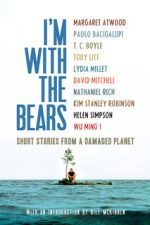
Autism is one of those worries that some parents have to deal with at some point in the early years of a child’s life. The rise in diagnosed cases of over the past few years has been alarming. The search for answers as to what could be the possible cause or trigger has been going on for years, with many controversies including the most notoriously common: vaccinations and environmental exposures.
Although the vaccine link has been constantly debunked, doctors and parents haven’t gotten any closer to finding the right answers for what could be impacting the brain development of children.
While the doctors all agree that there is a genetic susceptibility to the condition, Brita Belli in her new book claims that it could be the pairing of environmental exposures with genetic susceptibilities that may be the culprit. We talked to Belli about her book and the findings.
Here’s how Belli’s story starts:
“I had written a feature story on the topic for E-The Environmental Magazine and discovered in the course of writing that piece that there was a lot of research beginning to connect exposure to certain heavy metals, chemicals, pollutants and drugs during pregnancy to increased likelihood for autism,” she tells Green Prophet.
“The focus of autism research had largely been looking at genetics until recent years, with a few notable exceptions. In the mid-nineties it was discovered that some women who took thalidomide, used during the ‘60s to treat morning sickness, had children with autism as a result of that exposure. Other drugs were similarly tied to autism, including valproic acid and misoprostol. Those were the first clues, but it has taken years of autism rates continuing to climb (1 in 88 children in the U.S. now has autism according to the latest numbers) for research to really look seriously at how other chemicals to which we are all exposed may be acting together with genetic predisposition to drive up autism rates.”
How does your book answer some of the myths parents have about Autism and does it explain the reality, that is to say, is your work also about raising awareness?
One of the most important myths countered in the book is the idea that rising autism numbers are somehow just the result of over-zealous diagnosing on the part of doctors and specialists. There is a lot of argument that autism rates are related to expanded definition and increased diagnosis, but as I write in the book, if this were the case there would be many more adults with autism stepping forward who had been misdiagnosed in the past. As one psychiatrist—Dr. Suruchi Chandra—who treats children with autism, is quoted in the book as saying “We’re seeing an increase in the rates of ASDs [autism spectrum disorders] in children. Really only children.” What’s more, I raise issues about under-diagnosis and misdiagnosis in poor and minority communities, where there is less access to autism services and less parental knowledge. The book is absolutely about raising awareness—in particular that this rise is real, it is widespread, and likely greater than the current numbers suggest. What’s more, it is increasingly clear that the rise in autism is directly tied to common exposures in concert with genetic susceptibility.
What research or evidence if any, are your findings based on?
The book is full of research tracing connections between exposures during pregnancy and autism. Some of these reports are fairly shocking. For example, a 2004 study in Texas found that for every 1,000 pounds of environmentally released mercury, there was a 43% increase in the rate of special education services and a 61% increase in the rate of autism. Another study in San Francisco, found that where exposure to air pollutants was highest, the risk factor for autism increased by 5o%. Studies using baby hair and baby teeth have found that children with autism have difficulty getting rid of toxic metals like mercury (which, like lead, is known to cause neurological damage), and that increased antibiotics given to these children further inhibits this process.
And there is a growing body of research connecting autism to the many widespread hormone-altering chemicals such as flame retardants, pesticides and chemicals found in plastics like phthalates and bisphenol A. Pitocin, a drug administered during labor and delivery, is also suspect for its hormone-mimicking properties. Specifically, pitocin acts as synthetic oxytocin in the body. Oxytocin is the social hormone needed for bonding and trusting—and autistic children have difficulty producing and/or processing oxytocin, contributing to their social difficulties. None of these exposures alone are thought to be the sole cause of increased autism rates—rather it is the combination of these exposures acting together with genetics that is the biggest concern.
4. Since your book sidesteps the heated mercury-in-vaccines debate and its link with Autism, does that mean there is no correlation between the vaccines and Autism threat?
I address this topic in the introduction. Andrew Wakefield, whose research made the vaccine-autism connection, was discredited. No other research has found any connection between vaccines and autism and still, as a precaution, mercury-containing thimerosal was removed or reduced in all vaccinations for children (except for the flu vaccine) in 2001. Mercury is a major concern in relation to autism rates, but not from vaccines. The largest source of mercury today is from our seafood, thanks to emissions from coal burning power plants that settle across the nation’s waters and accumulate in fish—particularly big fish like tuna.
Dental fillings are the next largest source of exposure. Other places where mercury exposure can happen, as mentioned in the book, include schools and day care centers built on former factory sites and gym floors which have been found, in some cases, to include a mercury-containing top coat that can off-gas, providing a particularly worrisome path of exposure.
You mention that Autism triggers include flame retardants, pesticides, some pregnancy medications, and plastic (including food containers and shrink-wrap). What is a parent to do? Eliminate all of these from their lives?
Parents can and should take reasonable steps to limit their chemical exposures, particularly during pregnancy, and I provide some steps they can take, from minimizing plastics used for storing and especially heating food, to choosing organic fresh fruits and vegetables where possible, to checking cosmetic and baby care ingredients by using the Environmental Working Group’s Skin Deep Cosmetics Database.
But the problem of chemical exposure is not one parents can solve. It requires comprehensive reform of our chemical policies as has been introduced multiple times in the Safe Chemicals Act. The current legislation—the Toxic Substances Control Act—was passed in 1976 and grandfathered in some 61,000 chemicals. Since then, our understanding of what impacts these chemicals can have even in minute amounts during vulnerable windows of development, and the dangers they pose when acting together, give us ample reason to overhaul this outdated legislation and require that all chemicals be safety tested before being approved—including for their impacts on pregnant women and children.
I hope readers will take this as a call to action and support the efforts of organizations such as Healthy Child Healthy World, Environmental Working Group, Safer Chemicals Healthy Families and others at the forefront of reforming the nation’s chemical laws.
What advice do you have for parents who have an autistic child?
I learned so much from the parents I interviewed for this book—all of them are tireless advocates for their children and have devoted their lives to improving their children’s potential. It is difficult work raising children with autism and it easy to become overwhelmed. I would encourage all parents with autistic children to find support groups, both in their community and online, where they can turn to others who understand them, who will not judge them and who can share strategies for helping their children succeed.
The Autism Puzzle: Connecting the Dots between Environmental Toxins and Rising Autism Rates (Seven Stories Press) is available on Amazon.
Image of autistic girl from Shutterstock




How could anyone not be concerned about mercury in vaccines when they look at these simple facts. I have to question the knowledge of Ms. Belli concerning her expertise on this subject.
0.5 parts per billion (ppb) mercury = Kills human neuroblastoma cells (Parran et al., Toxicol Sci 2005; 86: 132-140).
2 ppb mercury = U.S. EPA limit for drinking water (http://www.epa. gov/safewater/ contaminants/ index.html# mcls).
20 ppb mercury = Neurite membrane structure destroyed (Leong et al., Neuroreport 2001; 12: 733-37).
200 ppb mercury = level in liquid the EPA classifies as hazardous waste based on toxicity characteristics.
http://www.epa.gov/epawaste/hazard/tsd/mercury/regs.htm
700-1000 ppb = Concentration of mercury in large predator fish.
25,000 ppb mercury = Concentration of mercury in multi-dose, Hepatitis B vaccine vials, administered at birth from 1991-2001 in the U.S.
50,000 ppb mercury = Concentration of mercury in multi-dose DTaP and Haemophilus B vaccine vials, administered 8 times in the 1990’s to children at 2, 4, 6, 12 and 18 months of age and currently “preservative” level mercury in multi-dose flu, meningococcal and tetanus vaccines. This can be confirmed by simply analyzing the multi-dose vials.
Autism Threat?
My identity is not a threat!
That line is a shameful piece of snide bigotry.